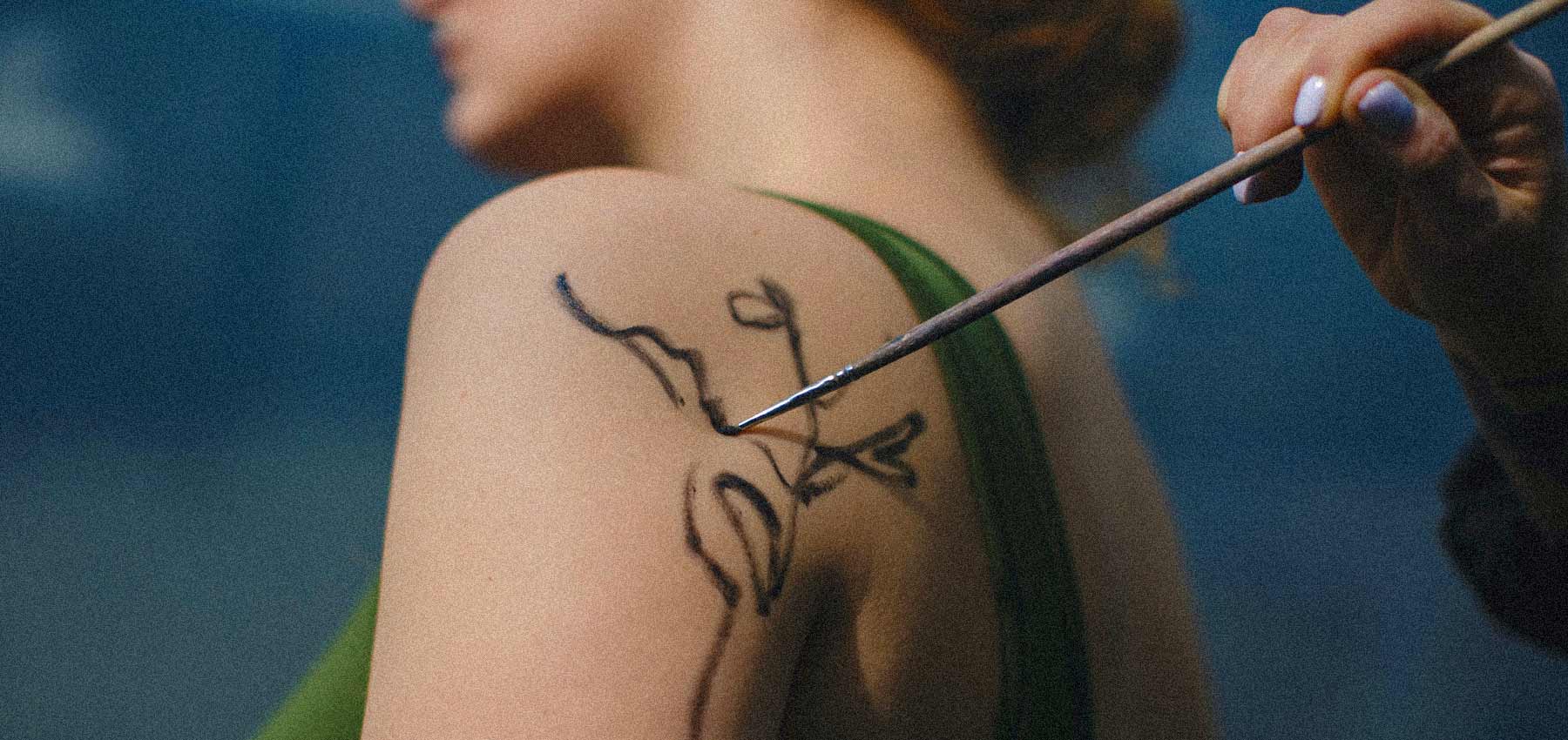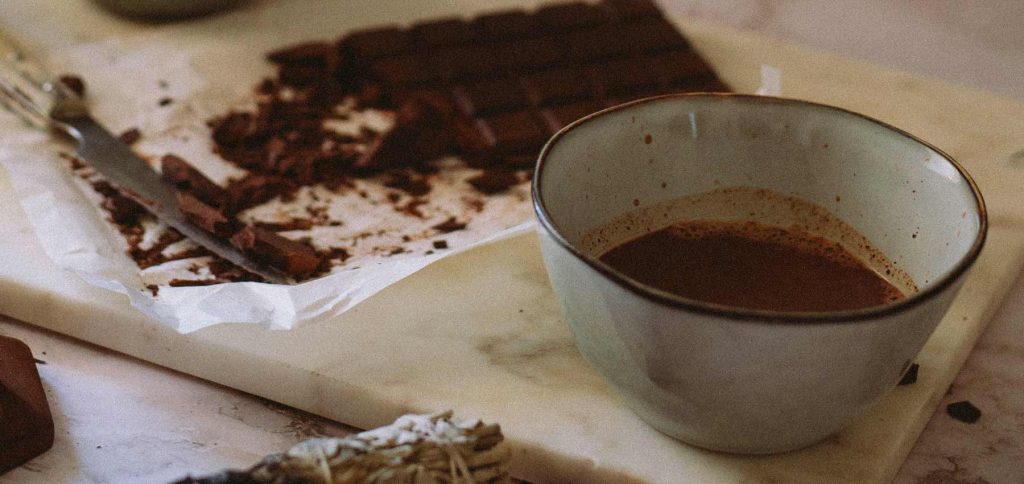Brand Trust and the Body
The embodied way of building brand trust
In Embodied Branding we bring our physicality, our bodies into our business and branding. We go beyond our minds and weave our embodied intelligence (the intelligence of the body) into marketing, becoming visible and building relationships with clients. Embodied Branding is an approach that acknowledges that we are so much more than our thinking mind, that we have so much more intelligence and wisdom to tap into: our bodies.
Branding and the body
Branding and body are directly linked. We discovered this when looking at the history of branding. Branding in the historical sense was done directly onto the body, a branded sign burned onto the skin for example, marking the body for life. Mostly, the body was the passive recipient of the brand.
At the same time, many of our ancestors chose to consciously brand their bodies with tribal tattoos or to mark rites of passage. Today, we too have a choice and can reclaim freedom and fluidity, in our bodies and in our branding. Our body is not branded or coerced anymore. Instead, we are free to dive deeply into our body intelligence, tapping into the body’s power and agency to guide us with our branding journey. We can allow the body to lead us to our passion, that which we want to share with the world. Our brand, our business, is also not ‘branded or fixed for life’. Especially in today’s ever-changing world, our business needs to stay fluid, organic, real, authentic and adaptable – an extension of ourselves, a breathing, living organism.
Branding as an empowered relationship
With our personal brand, we want to build lasting relationships with the right audience, people that recognize us for our unique gifts. Trust is the very foundation of any lasting and healthy relationship as well as for the relationship we have with our clients.
The way I work with Embodied Branding, I really want to grow a relationship with my client that is not one-sided, but that is a dynamic, alive ‘dance’ we co-create together: Instead of the client handing her power and decision making over to me, we weave together to continuously find and check in with her passion and her deepest why for her brand. That requires deep trust – the trust the client has in herself, and the trust she has in me.
The way a client chooses you is also a matter of brand trust. Your dream clients are choosing you with their ‘animal sense’, with their instinctual sense of ‘feeling safe’. Often subconsciously, a part of your client will ask: Does this person (you) feel safe? Does this person make me feel good, challenged, or intrigued? This sense and feeling comes from the limbic part of the brain, as we will see below. Trust powerfully guides our subconscious and influences our gut feeling and our choices. If there is trust, there is a ‘yes’. The (prospective) client will even sense, subconsciously, whether or not you trust your own offering. If you trust yourself and your offering, your client is more likely to trust you; if you don’t, they will sense that and might become uncertain about your brand.
The importance of brand trust in building and growing relationships with our clients brings us back to the body, once again, as trust can only be experienced and known by and inside our bodies. The body knows – deeply, clearly and instantly – whether to trust or not.
Recognizing trust in the body
Trust is something that we feel deep inside the body. Nowhere else can we feel or know trust. The mind can’t convince us to trust; only in and through the body can we truly know and recognize trust, which goes hand in hand with feeling safe. It has no words, it is a body experience that happens subconsciously. With practice and awareness, we can learn to recognize the physical experience of trust in our bodies.
How can you recognize trust in your body?
It is not something that you can search for; it is something you sense and receive when you open yourself to it. The first step is to become aware of your body. What do I mean by that? We are all aware that we ‘have’ a body, right? Still, this is not it. Becoming truly aware of our bodies is a practice, we can even say a meditation, one that we can drop into any time. It is a practice of mindfulness, a slightly misleading word here, as it actually is ‘body-fulness’: we practice to fill our bodies out with our presence and awareness.
Interoception is the word for conscious awareness of the inner landscape of the body. It is key for cultivating a deep understanding of the wisdom of the body, of the land inside our skin where all the intelligence of our body lies. Interoception, as the word suggests, refers to the perception of our inner world, the world of our cells, bones, muscles etc. Most of the time, our awareness is in our heads, where our brain is. Interoception speaks of the moment and place where our awareness travels inward, not filling the head only, but the whole body.
How to practice interoception?
You can do this lying down, sitting up or standing while moving your body gently. You start by softening your gaze or closing your eyes (this helps to go inside and not be distracted by the outside). The more you soften the eyes and the face, the more the mind will inevitably relax. Allow the relaxing mind to melt downward into your body and dissolve into all your cells. You will sense that the attention that was in your mind and the outside world is now filling out the spaces of your body. Whenever you notice your mind pulling on your awareness, simply bring it back into the body. If you like, you can imagine your body presence as a colour that is filling out the physical form of your body.
You can actively guide your awareness to different body parts, for example, the toes, the spine or the shoulders. As you do this, in ease and relaxation, you will notice sensations in your body, particularly in the body parts you bring your full awareness to. Perhaps it’s a sensation of warmth or tingling, perhaps the urge to move the body part, perhaps your clothing touching your skin, or maybe emptiness, pain or tightness. It does not matter what sensations there are, all you ‘do’ is stay present inside your body, receiving what there is.
That is body presence, being present with and perceptible to the wordless spaces of your body landscape. It is that, the receiving of what you sense inside your body that will tell you about trust. Your body will tell you, without any confusion or hesitation, whether you trust or not, whether you feel safe or not.
How does trust feel like inside your body?
This is partly individual and will differ from person to person, so only you can find out how it feels and moves in your body. However, the underlying sense will be a feeling of relaxation, of feeling safe, as opposed to contraction and tension. For example, when I experience fear, my jaw might clench and my shoulders and chest might tighten. When I feel trust and safety in the body, there is ease and spaciousness, there is an ‘opening’ and a softening in my body, perhaps even a sense of wanting to go towards something. Safety and trust are inseparably linked. If we do not feel safe, we cannot trust, and trust cannot grow if we feel unsafe. And both, trust and safety can only be experienced in and with the body.
Taking the body into the process of branding and into working with clients is a rich, truthful and endlessly rewarding process. It is such a truthful path, the path that includes our entire physicality because this is where our deepest truth and passion can be found – inside our bodies. We meet this truth in our intuition, our impulses, in what we’re drawn to and in our hearts movements. Our mind is an incredible gift for many things in our lives (such as logical thinking, planning, discerning, envisioning and setting clear intentions). And if we expand and take the body into our decision making and creating, we really utilize all that we can to create and manifest the best possible outcomes, businesses and projects, we utilize so much more of our resources as humans.

~
image by cottonbro @ pexels.com





